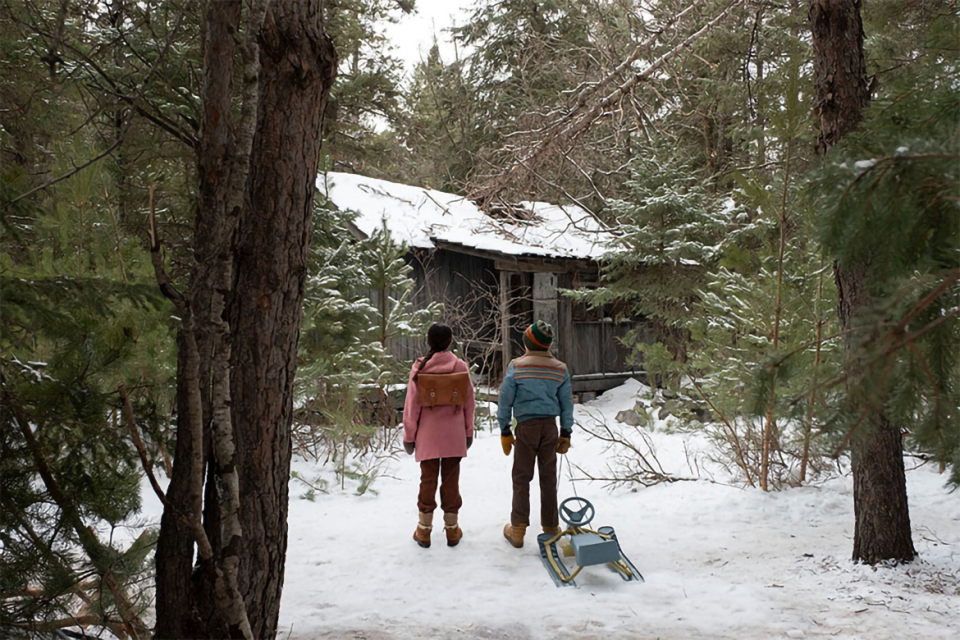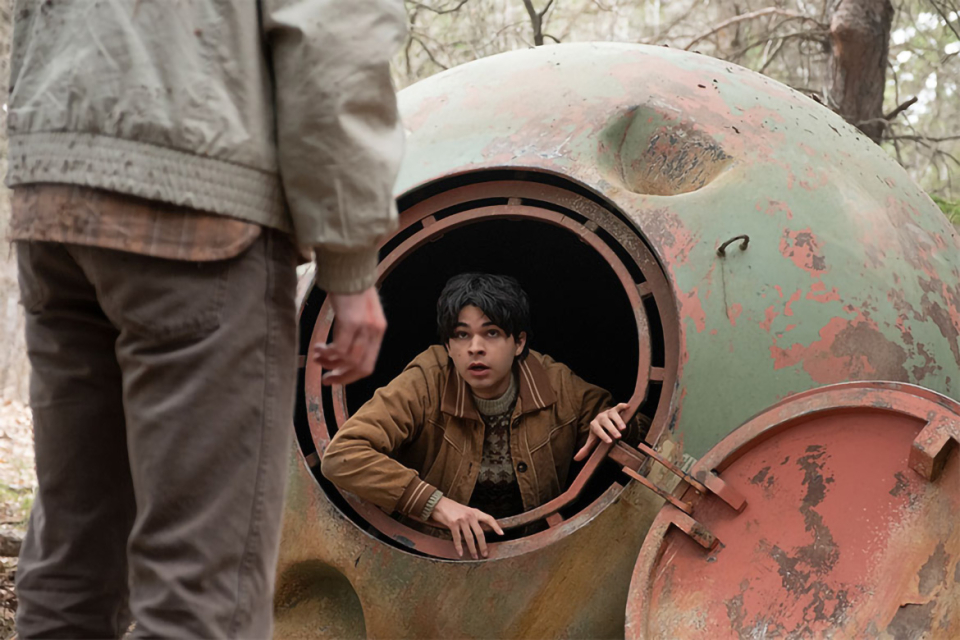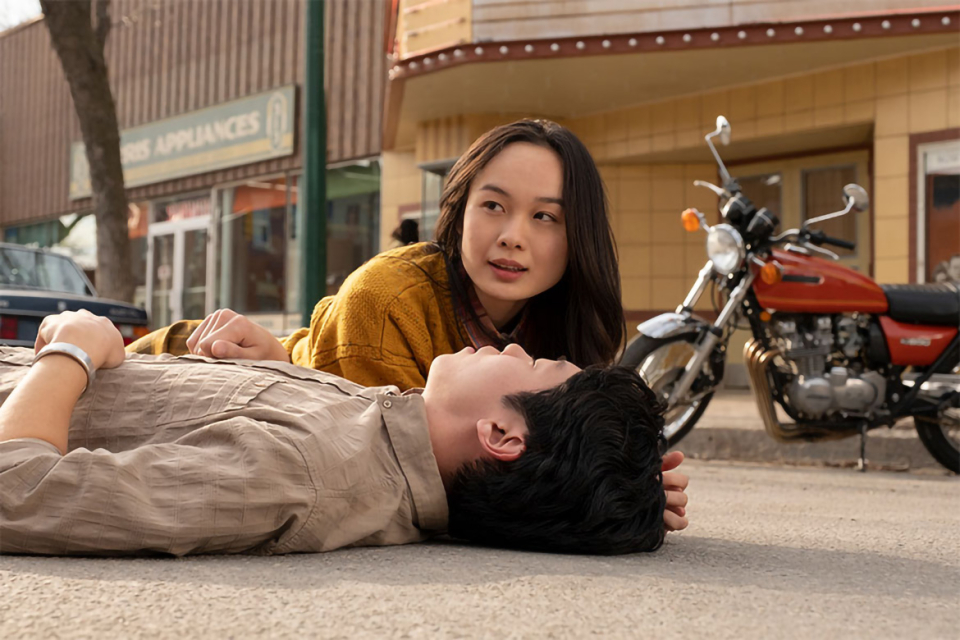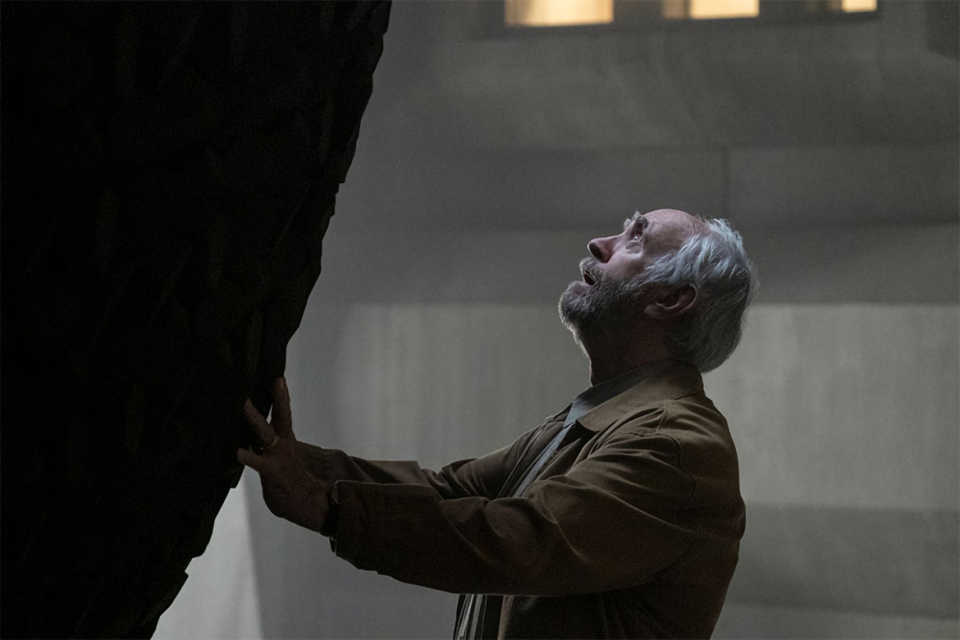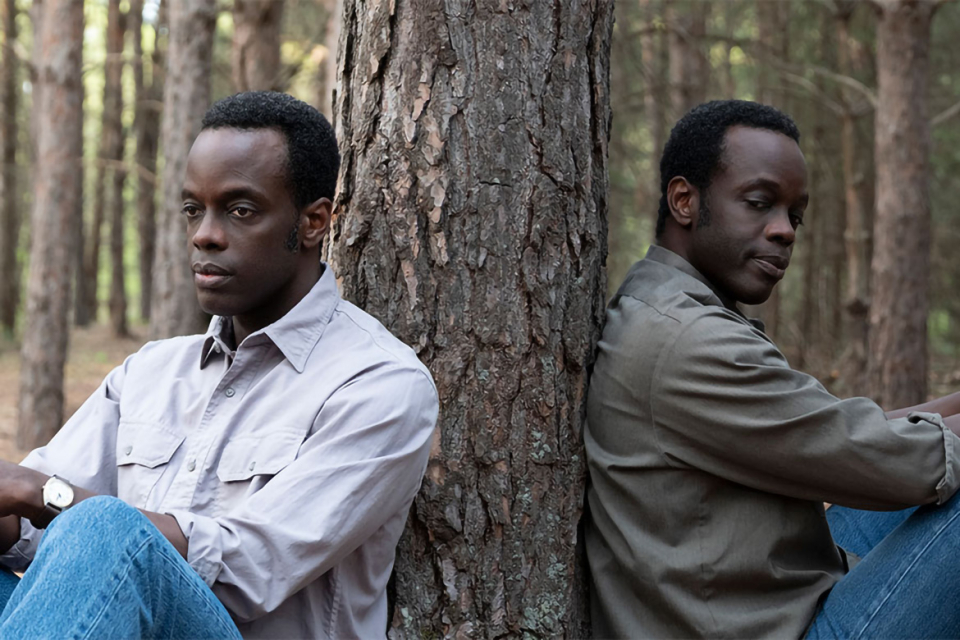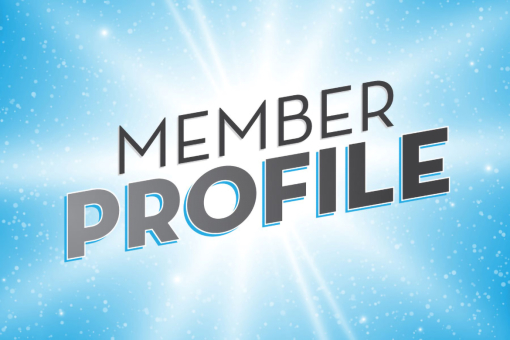Paul Leonard-Morgan and Philip Glass started scoring Amazon's science-fiction series Tales from the Loop before a single scene was filmed.
"I don't think I've ever seen anything quite like it," Leonard-Morgan said in a recent telephone interview. "It's so unique."
The sci-fi series, available for streaming on Amazon is based on a series of paintings by Swedish artist Simon Stålenhag, whose book, also titled Tales from the Loop, presents images of an unsettling world where the fantastic interacts with the mundane.
"When I first came on, about a year ago, they hadn't start shooting yet," Leonard-Morgan said. "So, to start, we worked off Simon's fantastic artwork."
The series, according to a statement from the studio, "explores the town and people who live above 'The Loop,' a machine built to unlock and explore the mysteries of the universe -- making things possible that were previously relegated only to science fiction."
That means, for instance, that a child walking through the woods after school would not be surprised to see a lone robot loitering among the trees. Neither does a chunk of dense black rock raise much of an eyebrow when it hovers in midair.
"The artwork just sets you off in a creative direction right away," Leonard-Morgan said. "It made us think of weird instruments, weird experimentation. It was a wonderful canvas to work with. It's sci-fi, but it's not scary sci-fi. Like, there's a robot, but it's not a Terminator robot. It's not going to hurt you."
That meant he and Glass wanted to create a score that "sounds otherworldly but also feels quite familiar as well."
The show is set in a sort of "science-fiction suburbia." Created by Nathaniel Halpern and directed by Mark Romanek, its cast includes Rebecca Hall, Jonathan Pryce, Paul Schneider, Duncan Joiner and Jane Alexander.
"We were writing loads of music before they shot one frame," Leonard-Morgan explained.
"We were writing loads of music before they shot one frame," Leonard-Morgan explained. And it became cyclical, he said - the music inspired Halpern and Romanek as they began setting the storyline to film, and then their cinematography inspired Leonard-Morgan and Glass as they composed additional music for the score.
Similarly, he said with a chuckle, Stålenhag created art to promote the series that was based on series stills that were inspired by his art.
"There are some huge sequences in it where there's no dialogue whatsoever," Leonard-Morgan said. "How many people get to score something like that?"
The series has a visual aesthetic that seems to be set in both the recent past and the near future - and that, Leonard-Morgan said, further informed their work.
"That's the thing with the score: it doesn't matter when it is set. It really doesn't matter," he said. "That's why we didn't want to use electronica. We didn't want a post-industrial soundtrack."
Instead, he said, they worked with "the simplicity of the piano, the cello, the recorder - very simple instruments. We wanted to rely on melody and chords to create a timeless piece."
Using those instruments as a foundation helped define the themes of the series.
"We decided we didn't need a huge orchestra," Leonard-Morgan said. "We wanted the antithesis of the big Hollywood soundtrack. It's about connectivity, how one person connects to another. It's not about violence and gore, it's about humanity, and how humanity exists and co-exists with the things around it."
Piano was an obvious choice for the soundtrack, he said, "because Philip writes such fantastic music for it."
But the cello "became our secret instrument. It has a peaceful, glorious range to it" that suits the series, he explained, because "there's a lot of melancholy in the show, but there's also a tremendous feeling of optimism."
Born in Scotland, Leonard-Morgan's love of music was instilled by his mother, who was a music teacher, and he earned a bachelor of arts degree in musical studies in 1995 from the Royal Scottish Academy of Music and Drama.
He was producing bands and composing chamber music when his career took a turn into musical scoring, which he considers his perfect calling.
"I never set out to write film music," he said. "But, what better job could you have? You get to have your passion. You get to collaborate with brilliant people.
"And you're telling a story - I adore that part of it. Music is full of emotion, it's there to make you feel something."
That, he insisted, is "one of the joys of writing music for film."
"I don't like it when soundtracks signpost things," he explained. "It tells you, 'You should feel happy,' or 'You should feel sad.' That's a weak way of writing soundtracks. But when you're listening to it as a standalone piece, it should still evoke images. It should evoke emotions. It's this wonderful combining of worlds, to create a story in that way."
His previous scores include films such as Limitless (starring Robert De Niro and Bradley Cooper), The Tomorrow Man (John Lithgow, Blythe Danner) and Dredd (Karl Urban, Lena Headey), TV series such as The Grand Tour, Dynasty and Wormwood, and video games like Battlefield Hardline, Warhammer 40,000: Dawn of War III and the upcoming Cyberpunk 2077.
He was nominated for an Emmy in 2016 for his work on the CBS TV spinoff of Limitless.
On Tales from the Loop, Leonard-Morgan said he was thrilled to work with Glass, whose impressive body of film work dates back to the 1960s.
On Tales from the Loop, Leonard-Morgan said he was thrilled to work with Glass, whose impressive body of film work dates back to the 1960s.
It was their first opportunity to collaborate, Leonard-Morgan said. In this case, he said, it was a matter of the showrunners deciding to "stick them together and see what happens." It worked really well, he said.
After an initial meeting in New York, where Leonard-Morgan said he "sat down with him having a coffee, noodling away on the piano" over possible themes, the men parted ways, Leonard-Morgan went back to Los Angeles and they worked separately on their ideas, sending fragments back and forth for feedback and expansion.
"We have a certain sensibility of the style in the classical genre," he said. "I would never compare myself to Philip, but there's a certain sensibility there - and Philip's harmonies are gorgeous.
"I'd send him something, and he'd say 'That harmony could use some work.' And he was absolutely right. Why didn't I think of that? Well, because I'm not Philip Glass."
Each took the other's work and played off the ideas to create something fresh between them, he explained.
"I wouldn't have achieved this on my own, and I like to think Philip wouldn't have achieved it on his own, either," Leonard-Morgan said. "By the end of it, it was a pretty unique style. You end up in this place where you just have no idea how you got there."
"I've never really collaborated with anyone like this before," he added. "But I think composers are going to be doing this more and more."
Since they didn't know much about the plot when they started composing, Leonard-Morgan said they worked from visual ideas, such as a painting that shows a robot with two kids in a field.
"That set us off. It's just beautiful," he said. "We just started scoring to that one visual. Imagine you're walking with a robot in a field. What does that music sound like?"
It evolved from there, he said.
"Nothing had been shot yet. We didn't know what the hell was going on," he said. "We'd read the script for episode 1 and that was it. So we just started making stuff up."
That, for instance, is when they decided to use the recorder - which Leonard-Morgan insisted has an "innocent" sound - to represent the Loop in the series. They also decided to mix classical sounds, such as the harp or a string quartet, with more esoteric instruments.
The ney, for instance, which is a type of Middle Eastern flute, and the lithopone, made of tuned stones.
"We were trying to come up with instruments that have not been affected by technology," he said. "That's what the Loop is all about. It's about technology, but it doesn't rely on technology. It's like a child's perspective on the world, and how humanity touches each other.
"It's such a wonderful story about humanity. It made me optimistic about the world in general."
The series premieres with eight episodes. Leonard-Morgan said he has "absolutely no idea" if the series will be renewed for more.
The makers, he said, "are absolutely ecstatic" with the first season and have storylines for a second season in the works.
"It's such an immersive world, you could lose yourself entirely in it," he said. "There could be one series, two series, eight series .. it doesn't matter. It's pure escapism."

